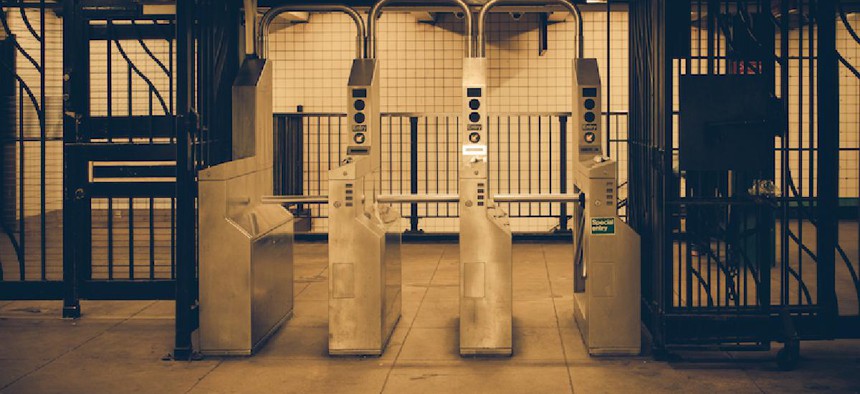Funding Fair Fares should be a city responsibility

Shutterstock
On March 19, the Metropolitan Transportation Authority increased fares on its monthly and weekly passes, with a monthly MetroCard now costing $121. While the transit system remains a bargain for most New Yorkers, regular fare hikes in recent years have increased the strain on low-income New Yorkers. The Fair Fares proposal to subsidize fares for low-wage workers is worth enacting, and the costs of providing this subsidy should be borne by New York City.
The MTA’s recent fare hike is necessary to maintain an extensive public transit network that operates 24 hours a day, seven days a week. The scope of operation and frequency of service allow New Yorkers, commuters and visitors to get to work, visit friends and enjoy cultural and recreational activities – without the cost of car ownership or the frustration of sitting in rush hour traffic. And even with biennial fare hikes in recent years, the price of a MetroCard swipe has grown more slowly since 1996 than other New York essentials, like a pizza pie.
For most New Yorkers, the cost of a monthly MetroCard is well below 15 percent of income, the threshold for affordable transit costs established by the U.S. Department of Housing and Urban Development. But for low-income residents, the cost of a monthly MetroCard is a large slice of their household budget: It adds up to $1,452 annually, approaching the unaffordability benchmark for a single worker with earnings at the federal poverty line.
The Community Service Society of New York and the Riders Alliance have proposed half-price fares for working-age adults who have incomes at or below the federal poverty line to support their ability to work, go to school and take other steps to advance economically. The Fair Fares proposal is a reasonable measure in line with mayoral priorities to promote work, increase job training, reduce income inequality and generally make New York City more affordable for all.
New York City Mayor Bill de Blasio has stated that he supports the measure, but the city should not pick up the tab, which is estimated to be $212 million in foregone fare revenue.
Here are two counterarguments:
First, alternative funding sources are not appropriate. Subsidizing services to the poor with higher fares for other riders makes little sense; a broad tax base that draws resources from all wealthier New Yorkers, not just those relying on the subway, should back the commitment to broader opportunity. Moreover, the state should not bear the cost by giving more of its tax revenue to the MTA because the beneficiaries are limited to New York City residents and do not include those in other parts of the state.
Second, there is precedent for city-subsidized fare reductions to meet larger policy goals. The MTA provides discounted MetroCards to students and senior citizens, which costs the city $100 million a year. The city also subsidizes paratransit for users who are disabled and unable to fully access subway and bus services at a yearly cost of $130 million. In total, the city provides $1 billion in annual operating funds to the MTA, an amount that is substantial and recognizes the importance of the transit network to the city’s economy and way of life.
At $212 million, the Fair Fares proposal would represent less than one half of one percent of New York City’s $84.7 billion operating budget. If the mayor supports the policy, it should be a priority that is accommodated within the city’s financial plan.
Maria Doulis is vice president of the Citizens Budget Commission.